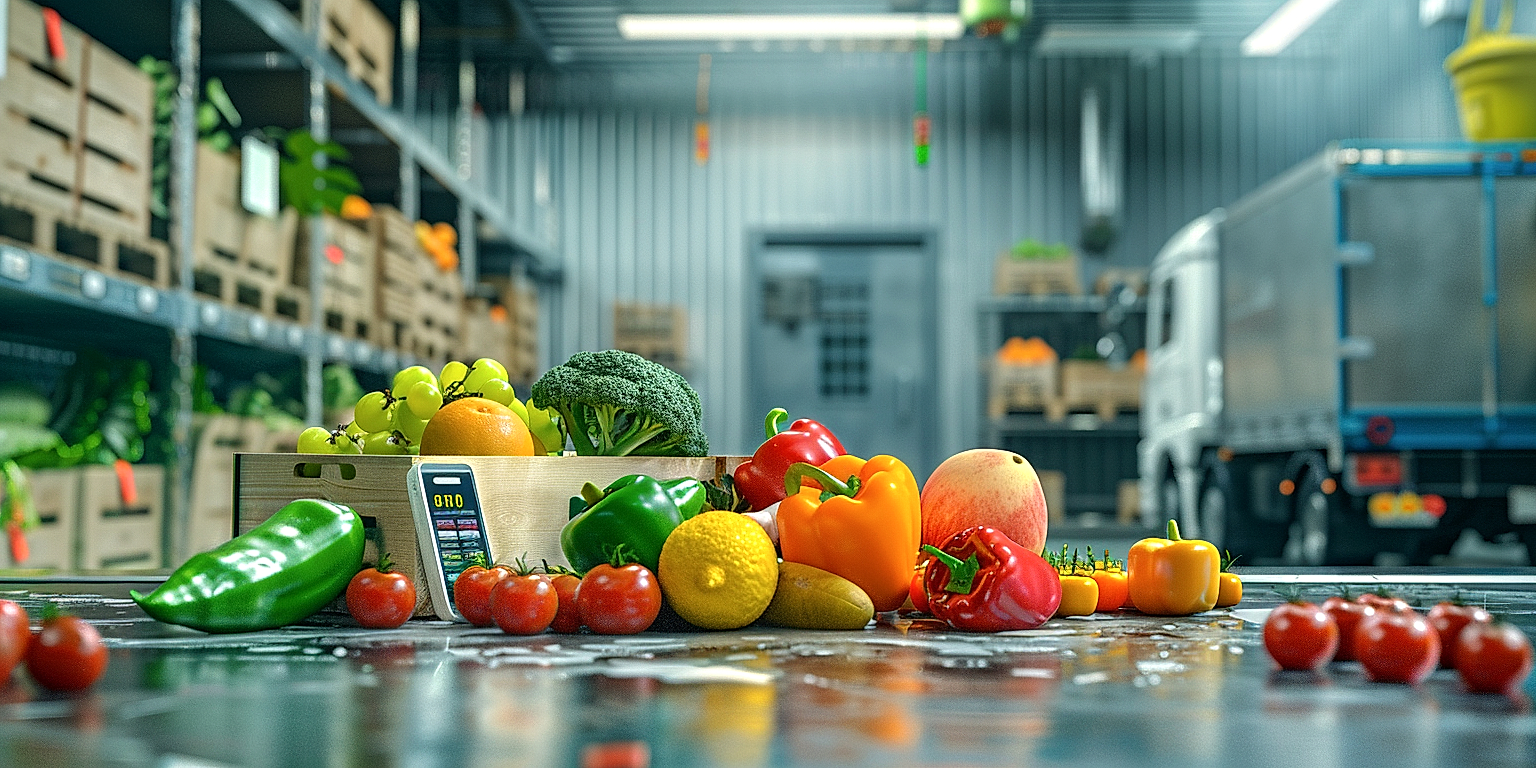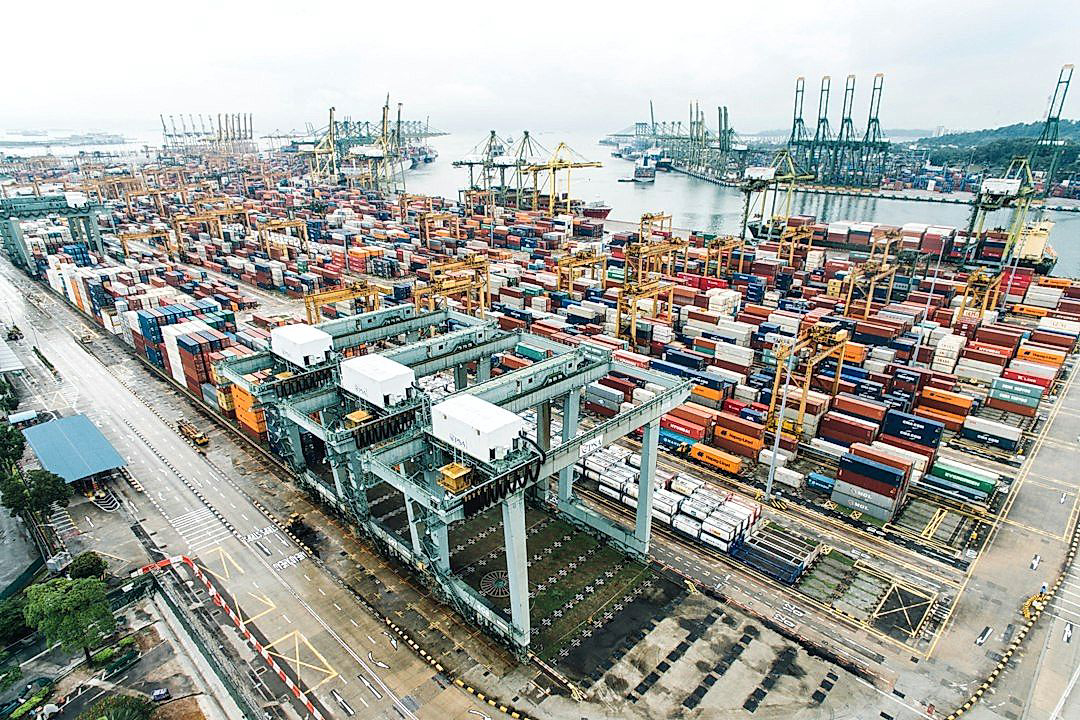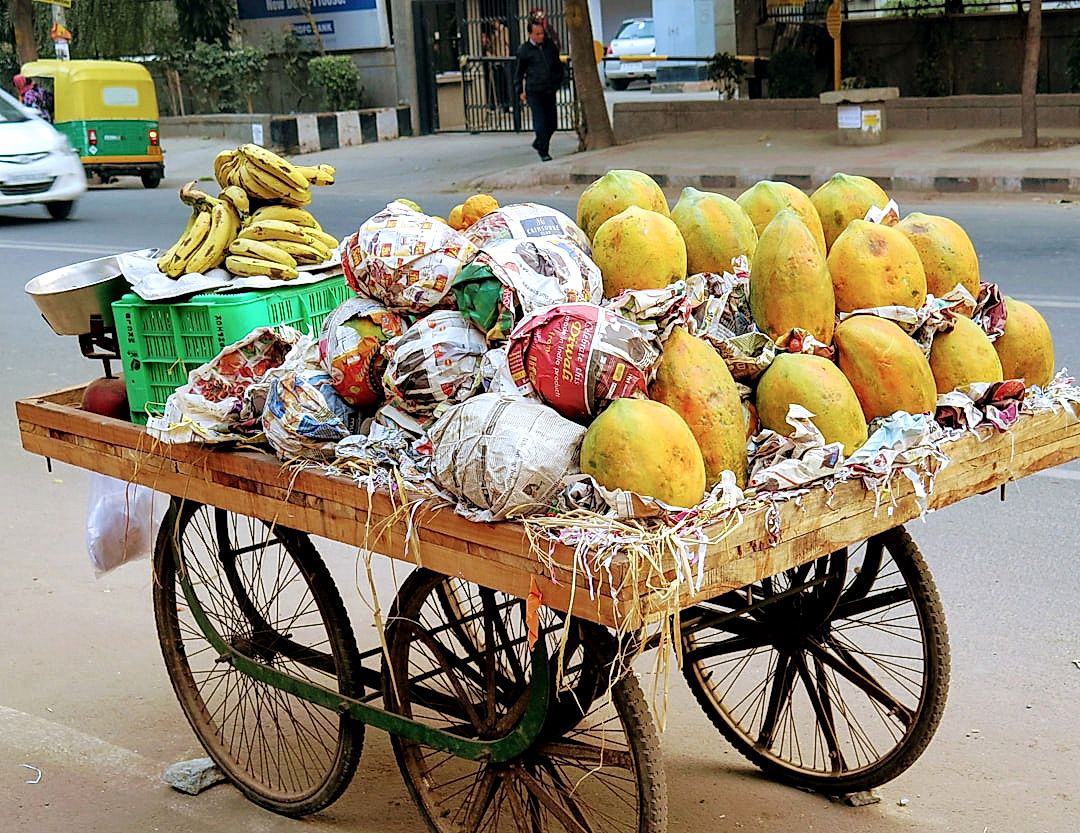Reducing waste in the agricultural sector is a pressing concern for businesses and environmentalists alike.
As demand for fresh produce continues to climb, so too does the volume of waste generated during the shipping process.
Tackling this issue requires a comprehensive understanding of supply chain management and environmental sustainability.
This article poses sustainable and cost-effective solutions to minimize wastage from farm to table.
Through effective strategies and practical measures, businesses can revolutionize their shipping methods for the better.
Read on for insights on fostering ecological resilience while maintaining profitability in produce transport.
Contents
- Tips For Reducing Waste In The Produce Shipping Process
- 1. Implement efficient load planning and route optimization.
- 2. Use Durable, Reusable Packaging Materials
- 3. Prioritize Shipping In-Season, Local Produce
- 4. Promote Stock Turnover to Avoid Spoilage
- 5. Invest in Temperature-Controlled Transportation
- 6. Train Staff in Handling and Storing Produce
- 7. Regularly service vehicles to prevent break-downs
- The Bottom Line
Tips For Reducing Waste In The Produce Shipping Process
1. Implement efficient load planning and route optimization.
The first crucial step to reducing waste in the produce shipping process entails the **implementation of efficient load planning and route optimization.**
**Effective load planning** implies that the cargo space available in a shipping vehicle is utilized in the most optimal way, ensuring that no unnecessary space is wasted while also guaranteeing that the produce isn’t overcrowded, thereby minimizing potential damage.
Overcrowding of produce can lead to spoiling of the shipment due to inadequate ventilation, while wasting space means fewer goods transported per trip, which can be costly and inefficient.
Efficient **load planning involves balancing** between using the available space to the maximum and maintaining the quality condition of the shipped produce.
To achieve optimal load planning, it can be handy to use technology tools currently available, such as load planning software, which can maximize the efficient use of cargo space.
On the other hand, **route optimization** ensures that produce is transported using the shortest and least congested routes.
Not only does this reduce fuel cost and emissions, thereby contributing to environmental sustainability, but also ensures that the produce reaches its destination within the shortest time possible, ensuring freshness upon delivery.
The best routes are those that avoid traffic jams, road constructions, or other delays and have minutes if not seconds differences in travel time that would significantly impact the freshness of the delivered produce.
**Route optimization can be quite complex** given the variable factors such as differing road conditions, weather factors and possible breakdowns.
Therefore, the success in route optimization largely depends on the use of effective route planning software that can easily adjust to these variables, providing real-time data, and suggesting the most efficient routes at any given time.
The efficiency and effectiveness of these steps cannot be overstressed; the combination of effective load planning and route optimization ensures that the produce reaches its destination in the freshest condition, ultimately contributing to a reduction of waste in the produce shipping process.
**Properly managed transportation** accounts for a significant portion of the cost of getting produce from farms to markets.
Thus, not only do these strategies benefit the environment by reducing waste, but also contribute to the profitability of the businesses involved in the shipping of produce.
It is therefore paramount for stakeholders in the produce shipping industry to invest in technologies, expertise and systems that promote optimal load planning and route optimization, as the dividends will manifest both in environmental conservation and bottom-line improvement.
2. Use Durable, Reusable Packaging Materials
In the pursuit of reducing waste in the produce shipping process, using durable, reusable packaging materials emerges as a critical aspect.
This entails using packaging materials that can withstand multiple uses without breaking down or becoming ineffective.
Doing so not only helps in significantly reducing the amount of waste generated, but also in minimizing the environmental impact associated with the discard of single-use packaging materials.
Furthermore, it provides for a more cost-effective option in the long run, seeing that the initial expenses for acquiring these achievable materials can be recouped over time.
High-quality, reusable packaging materials, in essence, promote both economic and environmental sustainability.
For perishable goods such as fresh produce, the selection of durable, reusable packaging should be strategic, taking into account factors such as ventilation, protection from potential damage, and the ability to retain freshness.
Reusable plastic crates (RPCs), for instance, have proven effective in this area, being sturdy, easy to clean, and capable of providing the necessary protection for the produce.
They are also easily stackable, making them handy for optimal load planning, thus further reducing the waste associated with poor packaging strategies.
Another viable option is corrugated plastic containers, lauded for their durability and reusability, and their capability to retain freshness for a long period.
Environmentally friendly packaging options such as biodegradable and compostable materials are also worth considering, especially for businesses keen on significantly reducing their carbon footprint.
Transitioning to these options might require a substantial initial investment, but the long-term benefits make them worthwhile.
In pursuing reusable packaging, it is important to factor in the ease of cleaning and sanitization.
Produce is very sensitive to contamination, and any packaging used must be easily sanitizable to maintain the highest levels of hygiene.
The materials chosen should be capable of being cleaned thoroughly and dried fast, preventing any growth of mould or microbes that could compromise the quality of the produce.
Additionally, businesses should invest in training their staff on the proper handling and storage of reusable packaging materials.
Ultimately, while transitioning to durable, reusable packaging materials might come with its practical challenges, it remains a critical step towards achieving sustainable waste management in the produce shipping process.
3. Prioritize Shipping In-Season, Local Produce
One of the cardinal tactics to effectively reduce the magnitude of waste in the produce shipping process is to prioritize the shipping of in-season, local produce.
This approach serves several purposes and has an array of benefits.
To start with, it significantly cuts down on transport distance.
When produce is sourced locally, it eliminates the need for long-distance shipping which is often linked with substantial waste due to prolonged transit time.
This reduces the chances of produce damage and spoilage during transportation, thereby ensuring that more of the produce makes it to the shelves in optimal condition.
Furthermore, this approach is associated with a reduction in carbon emissions which is beneficial to the environment.
Shipping in-season, local produce results in the consistent delivery of fresher, higher quality fruits and vegetables to consumers.
Additionally, in-season fruits and vegetables usually have better nutritional content compared to those harvested prematurely to endure long-distance shipping.
As such, this strategy not only contributes to waste reduction in produce shipping but also enhances the overall value that consumers obtain from the produce, fostering customer satisfaction and loyalty.
However, it is worth noting that this approach may require an adjustment in business operation, particularly for businesses that have been traditionally reliant on the shipping of imported or out-of-season produce.
Part of this adjustment would entail fostering strong relationships with local farmers and developing a comprehensive understanding of the local growing seasons for various fruits and vegetables.
Although this change might initially prove challenging, the long-term benefits in terms of waste reduction, environmental sustainability, and customer satisfaction make it an exceedingly worthwhile investment.
Despite the evident advantages, it is important to acknowledge that the strategy of prioritizing the shipping of in-season, local produce may not be universally applicable or equally effective in all settings.
For instance, in regions characterized by harsh climatic conditions or limited farming space, the availability of a diversity of local, in-season produce might be limited.
In such cases, businesses may need to complement this priority with supplementary strategies to optimize waste management in produce shipping.
Indeed, even within the strategy of prioritizing in-season, local produce, there is room for ongoing optimization and improvement.
For instance, various measures can be implemented to further ensure that in-season, local produce is harvested, packed, transported and stored in a manner that maximizes freshness and reduces waste.
4. Promote Stock Turnover to Avoid Spoilage
A key strategy in reducing wastage in the produce shipping process is to promote stock turnover. Within the realm of perishable goods such as fruits and vegetables, time is of the essence and ensuring that goods are sold and consumed as quickly as possible is crucial to reducing spoilage and subsequent wastage.
This involves efficient coordination and communication along all levels of the supply chain, from the farmers and growers to the transportation handlers, retail outlets, and the consumers.
Policies such as ‘first in, first out’ (FIFO) should be strictly implemented, as this ensures that produce which arrive first are also the ones sold first. Too often, freshly delivered produce is placed in front of older ones, pushing the latter to the back when they should be the first one to be sold.
Implementing stringent stock turnover strategies and practices is not just beneficial for the environment, but it also translates to significant cost savings for the business.
Technology should be enlisted in this cause as well, as streamlined inventory management systems are capable of tracking and monitoring produce from farm to table, affording transparency and ensuring that produce is sold in a timely manner.
Produce should be delivered in smaller, more frequent batches. This reduces the risk of spoilage and ensures that produce is at its freshest when it reaches the consumer.
Promotions and sales should be timed precisely, with consideration given to the perishability of the produce. By working with retail outlets to offer promotions on older produce, businesses can encourage quicker sales and thus, faster stock turnover.
Promote the concept of ‘ugly’ fruits and vegetables. Over 20% of fruits and vegetables never make it off farms due to their ‘cosmetic’ standards. Selling cosmetically imperfect, but still fresh and tasty produce can significantly decrease produce waste.
Furthermore, consumers should be educated on the fact that best before dates are merely an estimate and does not necessarily reflect the true quality of the produce. Through public information campaigns, businesses can boost their sales and reduce wastage.
Lastly, over-ordering is a common pitfall that leads to wastage. Businesses should engage in regular forecasting and demand planning to ensure that they do not order more produce than they can sell in a given time frame.
In summary, promoting stock turnover also encourages a more sustainable and responsible approach to food consumption, driving the necessary shift in mentality required to significantly reduce food wastage.
While implementing and maintaining a successful stock turnover strategy may require significant initial investment and meticulous planning, the long-term financial and environmental benefits will more than justify the efforts.
Overall, it’s important to keep in mind that reducing wastage in the produce shipping process is not a one-off effort – it’s a continuous endeavor that requires constant monitoring, adjustments and improvements.
5. Invest in Temperature-Controlled Transportation
It is critical to understand that the produce shipping process is not simply about moving goods from point A to point B.
There is a deeper layer of responsibility that ensures that the products arrive in optimum condition, maintaining their freshness and quality.
This is particularly relevant when we are talking about transporting fruits and vegetables, which are perishable items that can spoil easily and rapidly if not stored or transported under the right conditions.
Temperature-controlled transportation comes into play here, as it is the most effective way to preserve the quality and freshness of the produce during the shipping process.
Investing in temperature-controlled transportation means acquiring vehicles that come with built-in refrigeration systems.
Temperature-controlled vehicles ensure that your produce is shipped in an environment where the temperature is kept at a constant, optimal level, reducing the risk of spoilage.
This can lead to a significant reduction in waste in the produce shipping process.
However, investing in temperature-controlled transportation is not just about buying the right kind of vehicles.
It also involves regular maintenance and timely repairs of the refrigeration systems to ensure they are always in top working condition.
Staff also need to be trained on how to properly load and unload the produce to avoid damage and potential waste.
In addition, companies should seek to implement best practices for temperature-controlled transportation.
This includes the right stacking and loading techniques and avoiding overloading the vehicle to ensure proper air circulation.
The type of produce, its sensitivity to temperature fluctuations, and the ideal storage temperature should also be taken into account when planning the transportation.
Sometimes, it might be necessary to use different vehicles for different types of produce depending on their specific temperature requirements.
So, while investing in temperature-controlled transportation does require a certain financial outlay, it can ultimately lead to significant savings by reducing waste and ensuring that the highest-quality produce is delivered to the customers.
In turn, this can lead to increased customer satisfaction and help boost the company’s reputation.
6. Train Staff in Handling and Storing Produce
Training staff in how to handle and store produce properly is a significant factor in reducing waste throughout the shipping process.
Produce is a fragile commodity that requires careful handling to prevent damage and maintain optimal freshness.
The key focus should be on instructing staff on how to handle different types of produce, understanding their individual delicate nature and specific requirements.
For example, tomatoes require different handling and storage conditions compared to carrots or apples.
Therefore, staff training should encompass a broad range of produce-specific handling and storage techniques.
This knowledge will empower your team to handle every type of produce with the appropriate care during the packing, loading, transportation, and unloading stages of the shipping process.
Training also covers aspects such as how to stack produce in the truck, which can have considerable influence on the level of waste produced.
Overstacking or improperly stacking produce can lead to crushing, bruising, and other forms of damage that result in product loss.
Therefore, it’s crucial to train staff on how to optimally load trucks in a way that maximizes space while also maintaining the integrity of the produce.
Staff should also receive training on how to store produce properly upon arrival at its destination.
This includes understanding what storage conditions — in terms of temperature, humidity, and light exposure — are necessary for different types of produce.
Inadequate storage can lead to rapid spoilage, which again, adds to waste levels.
Therefore, making sure staff are well-informed on how to store each type of produce correctly is a critical aspect of waste reduction in the shipping process.
Regular refresher courses should be implemented as well so that staff members can stay up-to-date on the best handling and storage practices.
In essence, by investing in regular and comprehensive staff training on handling and storing of produce, businesses can significantly reduce waste at every stage of the produce shipping process.
7. Regularly service vehicles to prevent break-downs
Regular vehicle maintenance is a vital component to any successful produce shipping operation.
Ensuring regular servicing of trucks, vans, and other transportation vehicles can significantly reduce the likelihood of costly breakdowns.
When a produce truck breaks down, your business incurs a multitude of costs.
Not only do you face vehicle repair and possibly tow truck costs, but the downtime can also lead to delays in delivery.
These delays can potentially result in produce spoilage, which adds an additional loss to your bottom line.
Implementing a routine vehicle service schedule can mitigate these factors and keep your business running smoothly.
Regular servicing extends the lifespan of your vehicles, saving money in the long run.
Maintaining your fleet of vehicles also greatly reduces the risk of accidents.
In a worst-case scenario, a breakdown could lead to an accident, causing injuries and even fatalities apart from the product and vehicle damages.
Regular servicing includes routine checks and maintenance tasks such as oil changes, tire rotations, brake inspections, and more.
These types of tasks not only keep the vehicle running smoothly, but they can also help to identify potential issues before they become major problems.
It’s also important to keep good records of your vehicle service history.
This can ensure that all necessary maintenance tasks are carried out on schedule and can help to identify patterns or recurring issues.
Regular vehicle servicing aligns directly with the goal of reducing waste in the produce shipping process.
Every small effort towards maintaining the quality and longevity of your fleet can result in significant waste reduction.
By treating your vehicles as valuable assets and investing in their upkeep, you can ensure they remain reliable and effective in the transportation of produce.
The Bottom Line
Implementing efficient load planning, route optimization and maintenance of vehicles are crucial steps that can ensure the viability of the shipping industry while also reducing wastage.
By using durable, reusable packaging materials and prioritizing the shipment of in-season, local produce, the impact on the environment can be significantly minimized.
Additionally, investment in temperature-controlled transportation and thorough training of staff in produce handling and storage can drastically reduce spoilage.
All these measures, when implemented, will streamline operations, reduce costs and losses, and ultimately boost the sustainability and profitability of shipping businesses.
Revolutionizing these practices will not only ensure the freshness and quality of produce, but will simultaneously pave the way for a sustainable future in freight transport.




